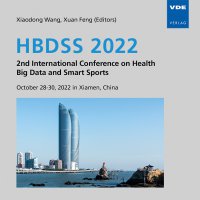ChroSegNet: An Attention-Based Model for Chromosome Instance Segmentation
Conference: HBDSS 2022 - 2nd International Conference on Health Big Data and Smart Sports
10/28/2022 - 10/30/2022 at Xiamen, China
Proceedings: HBDSS 2022
Pages: 5Language: englishTyp: PDF
Authors:
Chen, Xiaoyu; Cai, Qiang; Chen, Xiaoming (Beijing Technology and Business University, China)
Abstract:
In modern medical diagnosis, the karyotype analysis for human chromosome is clinically significant for the diagnosis and treatment of genetic diseases. In such an analysis, it is critically important to segment the banded chromosomes. Chromosome segmentation, however, is technically challenging due to the variable chromosome features, the complex background noise, and the uneven image quality of the chromosome images. Owing to these technical challenges, the existing deep learning based algorithms would have severe overfitting problems and are ineffective in the segmentation task. In this paper, we propose a novel instance-level chromosome segmentation model with our enhanced chromosome processing, namely ChroSegNet. Firstly, we develop enhanced chromosome processing techniques to realize the quality and quantity enhancement of the chromosome data, leading to an enhanced chromosome dataset for our subsequent network training. Secondly, in view of the complex characteristics of chromosome deformation, we propose our novel instance-level chromosome segmentation model “ChroSegNet” based on U-Net. Particularly, we incorporate a spatial attention mechanism to ChroSegNet, which can focus on the ROI regions of various chromosome instances. We evaluated ChroSegNet on our enhanced dataset and obtained the MPA of 93.31% and the F1-score of 92.99%. Experimental results show that ChroSegNet not only outperforms the representative segmentation models in chromosome instance segmentation performance, but also shows good generalization ability to adapt to various application scenarios. We believe that our proposed ChroSegNet is highly promising in future applications of genetic measurement and diagnosis.


